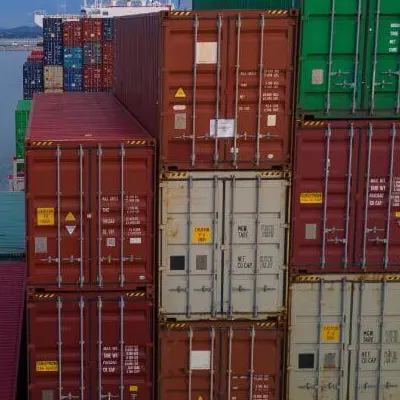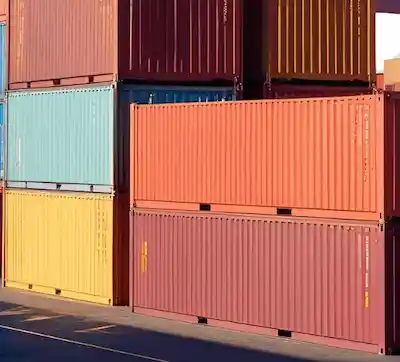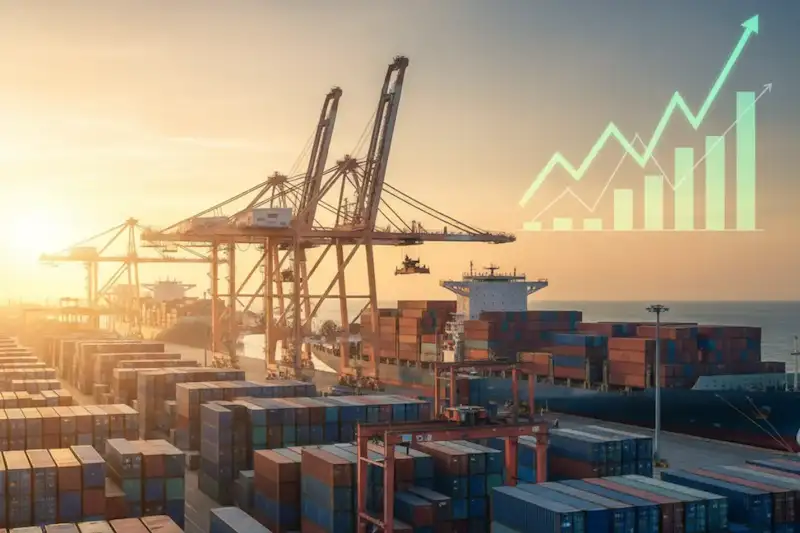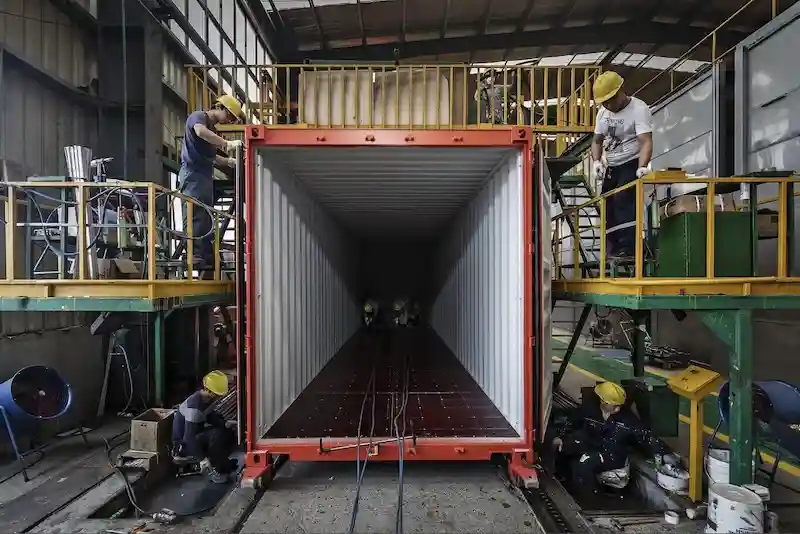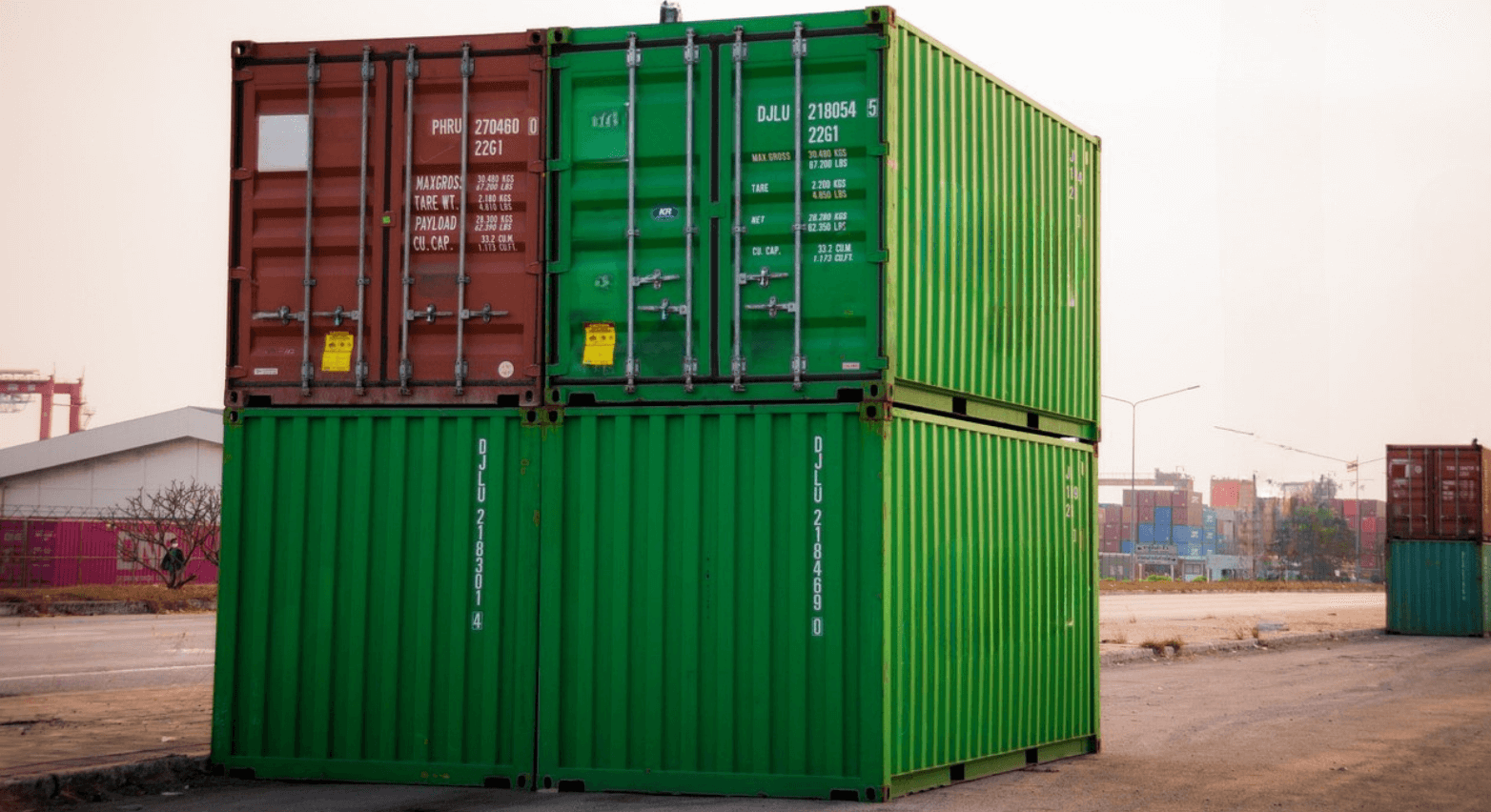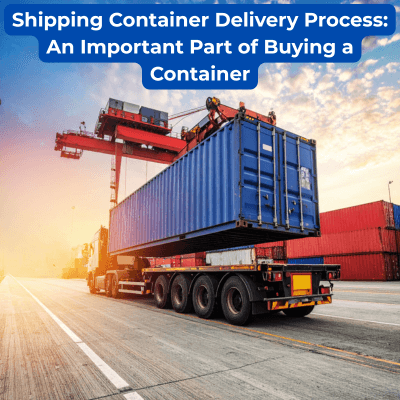How Long Does It Take To Build A Shipping Container?

Shipping container architecture certainly has had a significant impact on the construction sector. The re-use of shipping containers to make the structure of a building has been one of the more esoteric trends within sustainable architecture for the past few years. Shipping containers are well-suited for usage in dwellings due to their handy size, and their attraction lies in their apparent simplicity. So let’s consider exactly how much time to manufacture a shipping container is needed and how hard it is to create a cargo container that will comply with all ISO standards.
The containers are built in an efficient and automated factory. But to answer the question of “how long does it take to build a cargo container” we need to look at some research and facts.
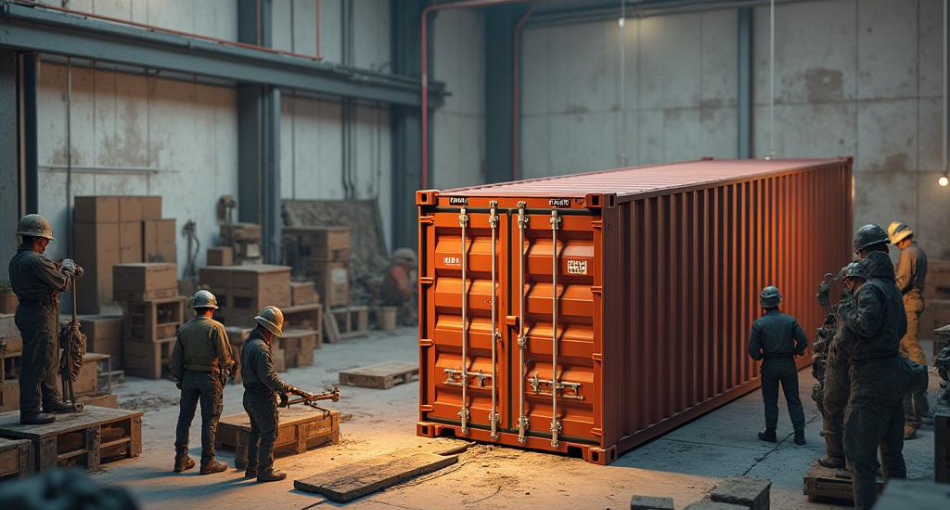
Does building a container require a lot of time?
According to John Fossey, Drewry’s director of container equipment and leasing studies, in an interview with American Shipper in May, “Waterborne paint does not dry as perfectly at night as it does during the day, especially during the winter months when temperatures are down. Some users don’t want to make an entire box at night or paint containers at night. They’re not of the same quality as those made during the day shift.”
The implication is that a container may be built, painted, and dried in a single shift.
This indicates that the entire production of a unit requires a collective effort of 10–16 hours of labor + paint drying time.
The considerable volume is more evidence of how rapidly containers are produced and how long it takes to build a shipping container. According to Drewry, in the first half of this year, industries produced 3,368,000 20-foot shipping container units of equipment.
Relevance of the Hog Cycle
In economic theory, the hog cycle is the time lag between output and when the choice to expand production is triggered by rising prices.
The hog-cycle effect has historically had a significant impact on the volatility of ocean freight. A container ship ordered today, for example, will not arrive until 2024. Demand may have decreased by then, and the market may no longer require the new ship. In contrast, today’s high rates are partly due to low ordering two to three years ago, when rates were low.
While the duration between ordering container equipment and receiving it, on the other hand, is relatively minimal, which decreases volatility.
Usually, we find shipping lines starting to slow down the pace that they bring containers into their fleets within the fourth quarter. This is, of course, an unprecedented year. Customers will probably continue adding equipment to their fleets in the fourth quarter to help them deal with persistent operational issues, meaning that the demand for sea freight also affects how long it takes to build a shipping container, albeit indirectly.
Can the lifespan of a shipping container be extended?
The answer is yes! The easiest way to do it, is to keep it as dry as possible. This is clearly not the most practical method for a ship built to convey commodities across oceans. A used container can often endure 10-12 years at sea, and even longer after being removed from cargo ships. A shipping container can last up to 25 years or longer if properly maintained. The container’s lifespan is determined by its condition and the environment in which it is stored. Although they are designed to withstand extreme temperatures, wetter, saltier, and warmer climates can shorten their longevity.
In order not to wonder “how much time to build a shipping container is needed” you have several options. The first is to monitor the condition of the container and conduct regular checks. Even a small scratch or dent on the container, which occurs quite often during the loading and unloading of the vessel, can affect its long-term use. With the ingress of salt water, the impact of temperatures, and other factors on a container that has not been treated with rust-resistant paint, it begins to form those defects many times faster. Also, doors and special locks must be constantly lubricated and treated to increase the container’s life.
The second option is to know in advance that you will need a new container. And Pelican Containers is happy to take care of delivering the best possible option and modify it for any of your needs!
To Sum It Up
Shipping containers have clearly entrenched themselves as the undisputed king of modern intermodal logistics. Their remarkable durability has been a motivating force behind their rise in popularity. The steel structures were built from the ground up to safeguard commodities from the rigors of long-distance shipping. Pelican Containers provides a convenient and cost-effective solution to transport and store products. To discover more about our container handling solutions, buy a 20ft standard shipping container, or buy a 40ft standard shipping container, contact our team of experts.
We Sell New and Used Shipping Containers in Aberdeen
We offer quality new and used shipping containers from our well-stocked distribution center in Aberdeen. We pick up conex boxes only from trusted sources so that, you need not compromise on the quality at any point in time.
Vanessa is a dedicated writer and content enthusiast at Pelican Containers. With a background in practical writing and a keen eye for clarity, she transforms complex container topics into easy-to-understand and useful content. Her passion lies in exploring the evolving world of container usage — from smart storage hacks to global logistics trends.
When she's not writing, Vanessa loves discovering creative shipping container projects or traveling to find new inspiration.
Explore thoughtful, informative, and accessible content with Vanessa!
Vanessa is a dedicated writer and content enthusiast at Pelican Containers. With a background in practical writing and a keen eye for clarity, she transforms complex container topics into easy-to-understand and useful content. Her passion lies in exploring the evolving world of container usage — from smart storage hacks to global logistics trends.
When she's not writing, Vanessa loves discovering creative shipping container projects or traveling to find new inspiration.
Explore thoughtful, informative, and accessible content with Vanessa!
FAQ
What are the average timelines for building a shipping container?
It doesn’t take much time to build a shipping container. Most of today’s containers are made in fully automated factories in China, and their production speed is at the highest level. But it will take much longer to deliver this container to the needed place. The workload is extremely high, so we advise you to use the services of Pelican Containers and clarify all the details now!
Why is a cargo container the most popular way to transport goods by sea?
Of course, some goods are better transported in bulk or tankers. But most everyday goods, including cars, household chemicals, barrels, and furniture, are transported in containers that provide maximum protection from the maritime climate.
Why is the question (how quickly containers can be built) not so important?
The thing is that there is enough capacity for a sufficient number of containers to be produced, but the demand for sea freight, and particularly for shipping containers, is growing every day. It’s no secret that this is the cheapest and most efficient type of transportation, second only to trains. So, you should pre-order a new batch of containers for your shipments so as not to stop your business due to delays.


